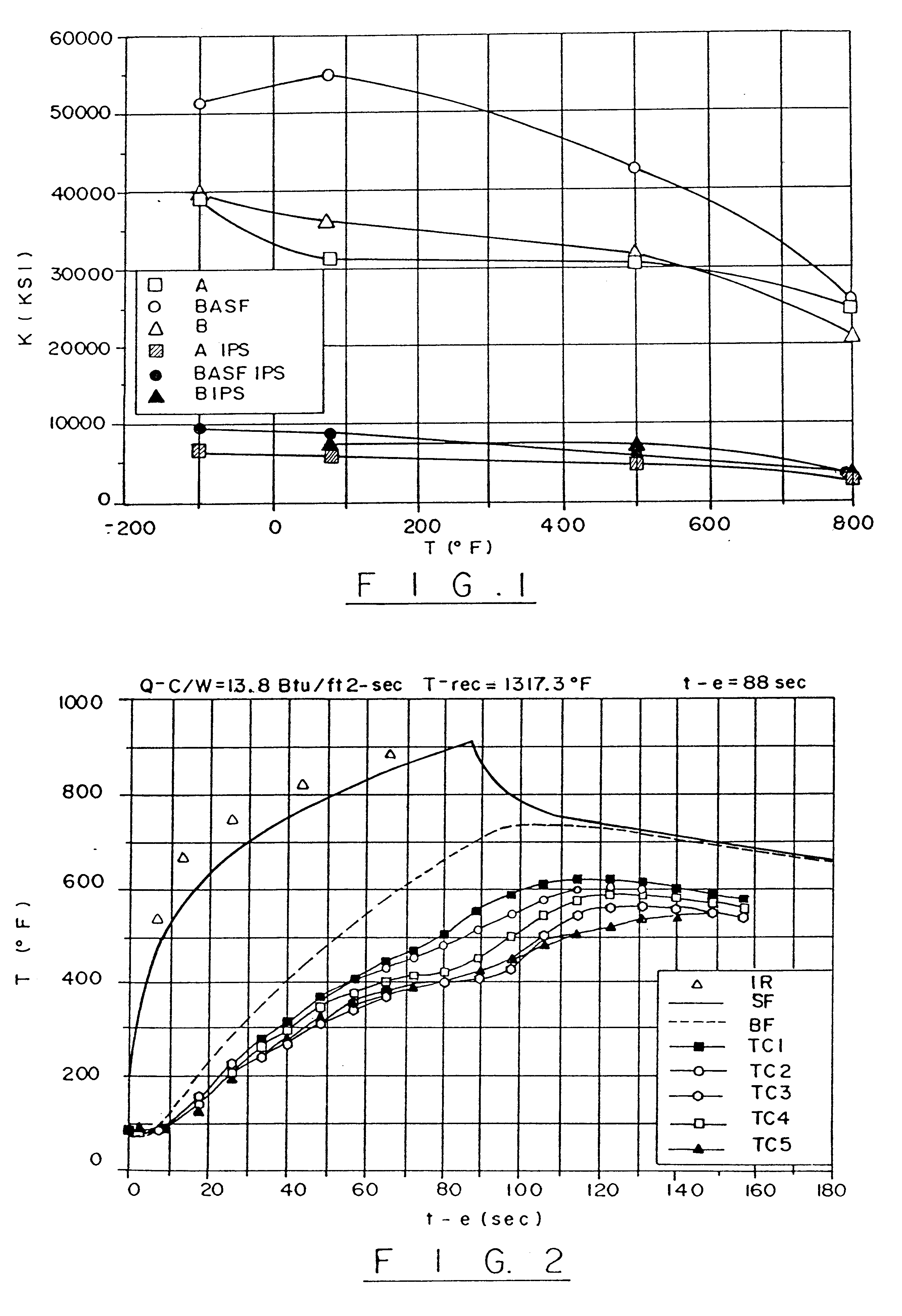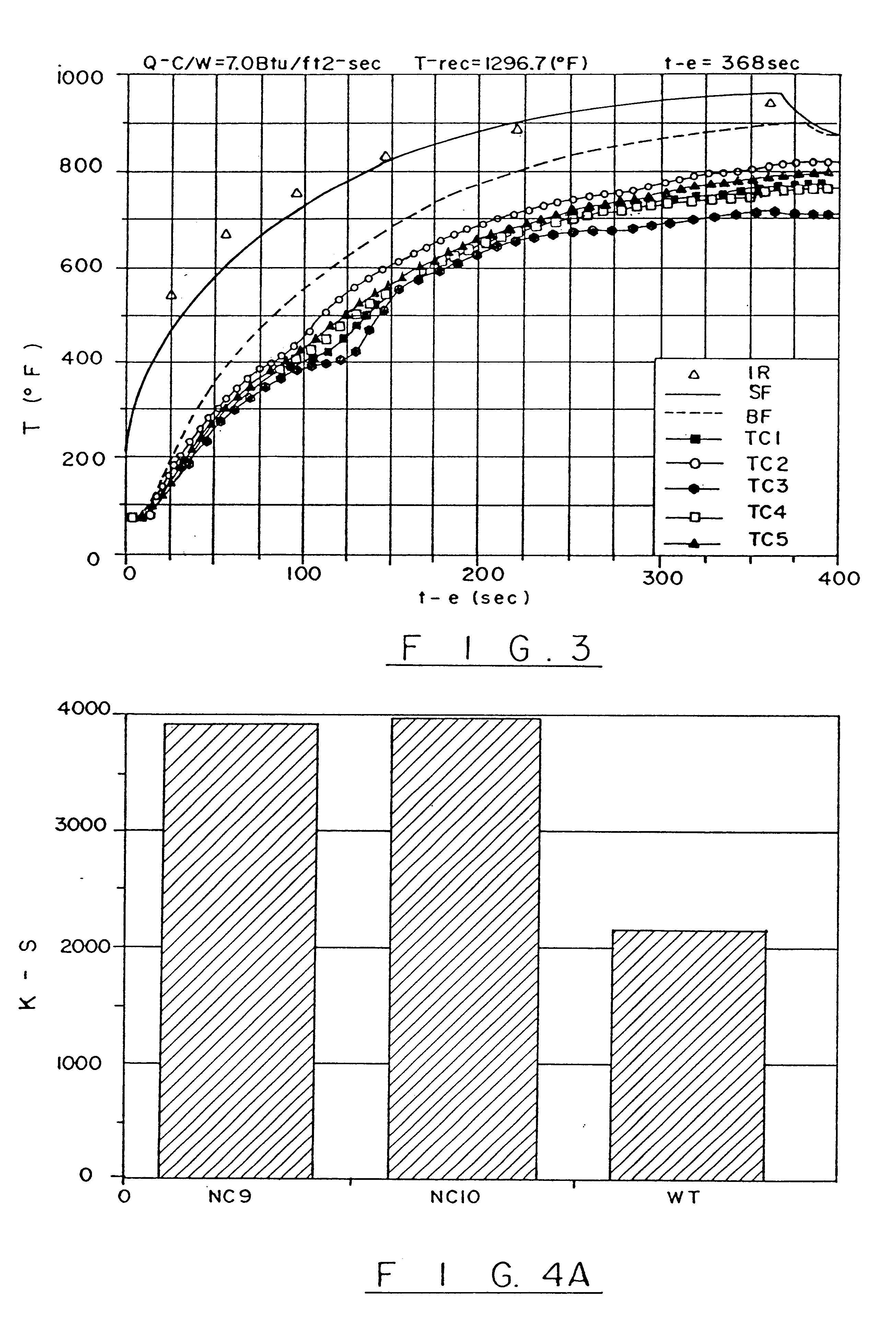High performance structural laminate composite material for use to 1000° F. and above, apparatus for and method of manufacturing same, and articles made with same
a composite material and high-performance technology, applied in the field of high-performance structural laminate composite material for use to 1000 ° f. and above, apparatus for and method of manufacturing same, and articles made with same, can solve the problems of increasing the cost over the existing cost of the nose cone, no material technology available to provide a nose cone, and increasing the weight of the existing nose cone, so as to achieve high modulus and higher structural properties
- Summary
- Abstract
- Description
- Claims
- Application Information
AI Technical Summary
Benefits of technology
Problems solved by technology
Method used
Image
Examples
example 2
Flat Laminate
Eight plies of an 8-harness satin fabric woven from Toho G-30 / 500-3K graphite fiber were impregnated with Cytec 506 phenolic resin in a ratio of 61-65% by weight graphite fiber and 35-39% by weight phenolic resin.
The resin-impregnated fiber laminate was then placed in apparatus 100 shown in FIGS. 5 and 7. The cure cycle of Table 3 was then performed, followed by the post cure cycle of Table 3A.
The laminate after the cycle of Table 3A had the following characteristics:
Average thickness: 0.102-0.111 inch;
Density: 0.1.4-1.5 g / cc;
Porosity: 7-10 by volume;
Fiber volume: 56-62%
Average compression strength at room temperature (about 77.degree. F.): 60.7 KSI;
Average compression strength at 500.degree. F.: 44.3 KSI;
Average interlaminar shear strength at room temperature: 4.89 KSI;
Average interlaminar shear strength at 500.degree. F.: 3.30 KSI;
Average in plane shear strength at room temperature: 10.1 KSI; and
Average in plane shear strength at 500.degree. F.: 5.45 KSI.
example 3
Conical Nose Cone
Eighteen plies (see Table 1A for lay-up pattern) of an 8-harness satin fabric woven from Toho G-30 / 500-3K graphite fiber were impregnated with Cytec 506 phenolic resin in a ratio of 61-65% by weight graphite fiber and 35-39% by weight phenolic resin.
The resin-impregnated fiber laminate was then placed in apparatus similar to apparatus 100 shown in FIGS. 5 and 7, but with a graphite / epoxy composite base in the shape the nose cone in place of base 111. The cure cycle of Table 3 was then performed, followed by the post cure cycle of Table 3A.
The laminate after the cycle of Table 3A had the following characteristics:
Average thickness: 0.23-0.25 inch;
Density: 1.4-1.5 g / cc;
Porosity: 7-12 by volume;
Fiber volume: 56-62%;
Average compression strength at room temperature (about 77.degree. F.): 50.2 KSI;
Average compression strength at 500.degree. F.: 48.0 KSI;
Average short beam shear strength at room temperature: 4000 psi; and
Average short beam shear strength at 500.degree. F.:...
PUM
| Property | Measurement | Unit |
|---|---|---|
| temperature | aaaaa | aaaaa |
| temperature | aaaaa | aaaaa |
| temperatures | aaaaa | aaaaa |
Abstract
Description
Claims
Application Information
 Login to View More
Login to View More - R&D
- Intellectual Property
- Life Sciences
- Materials
- Tech Scout
- Unparalleled Data Quality
- Higher Quality Content
- 60% Fewer Hallucinations
Browse by: Latest US Patents, China's latest patents, Technical Efficacy Thesaurus, Application Domain, Technology Topic, Popular Technical Reports.
© 2025 PatSnap. All rights reserved.Legal|Privacy policy|Modern Slavery Act Transparency Statement|Sitemap|About US| Contact US: help@patsnap.com



